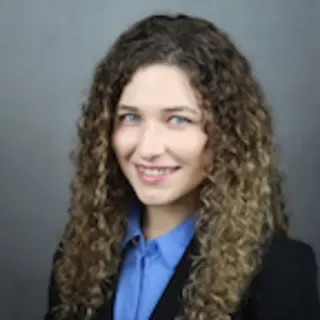Local Tissue Rearrangement for Hypertrophic Chemical Burn: Z-Plasty and VY-Plasty
Transcription
CHAPTER 1
Our second patient today is a 18-year-old young man who 6 years ago was involved in an assault where a disgruntled person was trying to assault his father with sulfuric acid. He was in the doorway at the time, with his father, and pushed his father out of the way and took the brunt of the acid onto his right neck and face and the back of his neck.
He's undergone probably a dozen operations at this point and is doing extremely well, except some of his scars are extremely tight. In the area of the midline of his neck, he has an area of normal skin where the acid did not burn him and an area of very abnormal skin on his opposite side. With the chronic motion of his neck, it's caused hypertrophy of that scar, and rearranging the scar by using some of the normal skin and transposing it across the scar skin in a Z-plasty fashion will allow a decrease in the tension of the scar and hopefully remodeling of the hypertrophy. That will also allow a better functioning and motion to his neck. He has a couple of other small areas of scar on the face and the neck, where there will also be an improvement.
It's a relatively small operation, considering what he's had in the past, including many skin grafts, but at this point in time, we want to try to do a smaller procedure on him that will be very efficacious. That will be a Z-plasty technique and there may be other small tissue remodeling that we may be able to effect in that manner.
CHAPTER 2
There's 2 different Z-plasties we're going to do here. There's plenty of things that this young man can have done, but he wanted something very small, and something that might be a little bit effective in terms of taking care of some of the contractures on his neck.
You can't see his face right here, but this is his chin, and this is his clavicle, and this is his sternum. He turns his head, he's still got a little tightened area here, and he's had some normal skin on the left side of his face and left neck, and if the more elastic normal skin from the left side we can transfer over to his right side, the less tightness there'll be, because that's the main problem, is tightness.
So, one little thing here, within the area of the scar you can do small Z-plasties that can be very effective in taking care of small areas, as long as you can pull it from each direction. And then the bigger one that's of more interest is in the area of the midline of the neck at the juncture between - the very hypertrophic, almost keloid-type scar, and the abnormal - the normal skin of the neck and the abnormal skin of the neck. So if we can take care of some of that tight area - here, this tight band - then that will allow less tightness, less tension on that scar and the scar may start melting away on its own. So what we need to do is find a way to get some of this extra skin here to come across that way.
So it looks like he may have had previous Z-plasties in the past. So we won't disrupt those. We can do a Z-plasty in this hair-bearing region to try to bring some normal skin across the neck. And here's a previous Z-plasty he had here, as well. Gives a little zigzag shape at the end of it all.
So here's a Z we'll fashion here. The limbs should be kind of placed as much as possible along Langer's lines, the transverse nature. So, the nature of the tightness, and then how you're going to transpose it. So that'll transpose over to that spot and that over to that spot. This one here, since it was a previous Z-plasty, I think we want - so we can borrow some of that skin, we'll elevate it and bring it across, and then this will be something more like a Y - see that Y - and then this tip will go here and it'll turn into a V. That will add length in this dimension, therefore making a little less tight. So a Z-plasty here and a Y-V plasty here. There's no real laxity here, so we can't elevate this again and try to bring that across.
Can I have some Stevens scissors, please?
So acid burns to the face often leave a perfectly normal side of the face and a devastated other side of the face. Fortunately, his face looks good. It was mostly the posterior aspect of his body that took the brunt of everything.
Let's have a little more local, please.
But the neck was really tight, but his skin grafts heal up exceptionally well, so they're not - Thank you. With the local anesthetic, you can get into a tissue plane of where you're going to do the dissection, and the local anesthetic fluid can actually do some of the dissection for you. So it's very - it makes the elevation rotation easier.
CHAPTER 3
For normal dermis - this is normal dermis, it'll have a subdermal plexus. That subdermal plexus will be what supplies the skin. In the area where it's skin graft, the skin graft does not have a normal subdermal plexus. So that other skin graft on his right side, it'll have to be done judiciously and has to be relatively small in order to see how that will go.
So I would incise the central limb. Lift that up a little bit. Transpose. I'll come over there so I can make that second cut now. Lift that corner, please. Okay, good. Cautery. Thank you. Perfect.
So as we kind of pull up on the chin, this will naturally transpose itself a little bit. Find the tethering points and bring it across. This'll kind of go over that way. The scarred area doesn't transpose as easily because it's not flexible elastic tissue.
You get that Prolene?
By the way this elevates and crosses, I think I can get a few more millimeters across the scar. Since I have the exposure, I think I'm going to proceed to my V-Y plasty, so I'll raise the skin flap in the neck along here. Yeah, pick up there, please. Very dense scar. It'll come across that way.
So we'll take the Prolene first, please. Thanks. So first you do the tips of each of the Z-plasties. So here's the tip of that V here. We've got some extra here, we might be able to excise some of that hypertrophic scar. I usually try to avoid it, but I think it will be unavoidable here. And we can kind of bring that across, how far across? Probably only a centimeter, maybe a little bit more.
I don't know if we have the blue suture, which is kind of nice, so we don't cut out all his hair.
Can you pull up a little bit more on the chin - there we go.
Getting down through the scar into the subcutaneous tissue, not into the deep tissue. That should give a nice release.
Suture, please.
Okay, so that's basically decreased some of the tension, and I mean it will translate the line of tension to the end of where that is. You can see, there's still a little bit of tension, but it's made some of that central tension a little bit better.
Do you want to switch - ?
Yes, please.
So we've switched to a blue suture, so it'll be less difficult to take the suture out and we won't be plucking his beard hair as we do it.
So, right to the edge is where you want to do it so you don't make that skin tip ischemic. And then you cheat it up a little bit toward the tip to take the tension off the tip. That's going to be hard to thin out without making this tip ischemic.
So you have the tip stitch and then the tension-relieving stitch and then the rest of them you just try to equilibrate it, make it fit in nicely and let it heal, primarily. So we'll finish that in a moment once we figure out how to make that a little better.
Excise it or leave it?
Yeah, excise or leave? Maybe a steroid injection in the future. Relieving the tension might make it just become less hypertrophic, too.
Steri-Strips?
So again, tension-relieving sutures on that tip. It's a little on the ischemic side, so whatever you can do to take the tension off with the secondary sutures will take the tension off the tip, which is most ischemic part. Again, this tissue here has a normal subdermal plexus, whereas the scar, it may be injured.
So here we have - trying to come into the picture here - I think we can kind of do something like this. A little mattress suture.
What's going to happen with that? I think we're going to have to leave that. I don't know, maybe - let's see.
Yeah, it does look pretty injured. We could come back later with a steroid injection, try to make it better with that.
So I'm not going to excise that tissue because that may be the blood supply to the tip of that Z-plasty limb. So it may be a little hypertrophic but it may settle down because the tension's relieved. And if it doesn't, then we can either laser and/or inject it with steroid. Or, secondarily, when the blood supply to that - skin tip improves - excise it, and that way it'll - the other skin tip will have repaired. If we do it now, the tip of that Z-plasty over here will not survive.
Huh. Even though it's blue, I can't see it.
Got another blue suture ready to go?
Some people do different layered techniques for the Z-plasty. Some use like a deep Monocryl-type suture followed by a chromic, that works well. I think something simple like a monofilament permanent suture is not bad, as it - is pretty minimally inflammatory and it is going to come out in about a week to 2 weeks. It can sometimes leave little suture spots, if you leave it in that long, about where it was, so that's the downside. But because you're changing skin flaps so much, it's kind of hard to get a perfect closure, and therefore the interrupted suture is what I recommend. Sometimes you can get away with a running suture, but in this case I certainly don't think that's the case.
If you have an area of - a really significant scar band and the scar is pretty hypertrophic, if you put the Z-plasty within the scar and just get it to the normal skin on either side of it, that may be enough without having to excise any of the hypertrophic scarring. Because if it's under an area of chronic tension and relaxation, and you can imagine a scar in this direction on the neck, chronic tension and relaxation, it will become hypertrophic. If you relieve the tension, the cell mediators that encourage that hypertrophy decrease significantly, and it's very likely to resolve on its own without excising it. So that's what we often refer to as a rehabilitation of scar instead of an excision of scar. I also tried other different scar modalities, including laser, to see if that's something that might - affect the general wound healing and make it a little better.
The central limb of the Z-plasty doesn't really have any tension on it, but sometimes can involute, so sometimes you have to mattress it if it's trying to fold in on itself.
So can you think of other ways to make this scar tension better? Maybe something more involved than a small Z-plasty? I can probably just start it out, so I think that a fair amount of the time you get severe injuries on one side of the neck, you may have a fairly large amount of normal skin over here, so the possibility you can consider is to place is a tissue expander under the normal neck skin to expand it, without any intention of bringing it up on the face but to transversely bring it across the neck to take care of the tension, break up the skin graft, and bring in elastic normal tissue to decrease the - the scar contracture, which is - the scarred and skin-grafted skin just is harder to transpose.
Okay, that's that. Why don't you come around this side.
CHAPTER 4
Thank you. We're good, we'll go with the 15 blade momentarily.
So this is within this area of skin grafting from before, so we'll just elevate it in a relatively minor form. There is - the Z-plasties are a little bit more obtuse but we come out at about a 90° angle and quickly move around to a 60° angle along the area of the limbs. That keeps the very tip of the Z-plasty from being too skinny, as it wants to contract and be too acute. So we start out being 90° and then move around to the 60° angle that we want.
The direction of the Z-plasty is the next thing to consider, and we've already decided that the Z-plasty would do well - you want to get down to about fat or - or loose subcutaneous tissue, and then, you can see, the direction on the neck - the better direction of the Z-plasty is this direction compared to the other direction, as it would leave a more longitudinal scar instead of a transverse scar, so clearly the direction of the Z-plasties, for this Z-plasty, is this one, as opposed to the opposing Z-plasty.
I like to keep the tips of the Z-plasty intact - except when dealing with very thick scar, like on the area of the upper neck we've just done - that maintains control to the area that we're incising. Once you've lost the tension on the area, you lose a little bit of control and it's a little harder to make your incisions the way you want them.
Once that's done, you can take a forceps, get up underneath that tip, and then just incise it and it'll pop it open, and it'll hopefully allow us to - if the Z-plasty was designed correctly, it will hopefully pop into the right direction.
Yeah, right on top of the platysma there, I think that's - actually, yep, perfect.
Yeah, I didn't want to go deeper.
Yeah, perfect. You can get that one, that'll get good exposure.
You can see, with this being in the skin graft, there's no subdermal plexus, you can't really transpose as easily, and the tissue's not elastic, so it's a little bit more difficult in an area of significant scarring.
Let's get a little deeper through here. I think. Yeah. A little bit.
Here, there's no classic subcutaneous tissue, it pretty much looks like platysmal muscle, so it's not going to be a classic Z-plasty in the sense where you get down to the subcutaneous fat and then can transpose it. Okay. Good. Nylon. So while that tension band has improved, there's a general lack of tissue in many different directions here, so the Z-plasty - here, you want to go over there... That's like... The Z-plasty becomes a little more difficult to transpose. Sometimes they want to transpose themselves, which is always really nice because it takes - it means there's much less tension on the area.
I'll take the scissors.
She's got them, thanks.
So we've basically oriented the longitudinal scar into a zigzag, which leaves it in a more transverse-type scar and there'll hopefully be less tension or borrowing from the transverse diameter, which doesn't really have much to give here, so the stitches are a little tighter. And then for the upper ones up here.
So he's very active young man, so putting a tissue expander into his neck is a little difficult, he wants to make sure he's going back to school and he's very active in sports, so - tissue expanders in the neck are not without significant problems and potential complications and the tissue expanders tend to be, wherever the area they're going into, the more mobility there is, the higher the complication rate. So the neck tissue expanders are about a 25% complication rate.
Do we have another 4-0?
Sure.
Take the tension off the tip of that. That's the key.
So now you can see we've taken - we've transposed a band contracture in this direction, no longer there, and now we've got corner stitches, tension-relieving sutures, and now I'll just put a couple in the intervening transverse, middle of the Z-plasty. Middle limb.
Did a stitch come out?
I think that one came out. You can put another one there. There it is.
One more.
Okay.
A lot of these sutures are all placed next to the suture line without taking big bites, and that's to avoid causing any ischemia to those tips.
Good. And we're done.
CHAPTER 5
So the final operation today on our young man with the acid burn injury to the face, he had a very hypertrophic scar to the region of the midline of the neck. He did have a very big area of scarring that was like a scar ball that you may have been able to discern that was relatively difficult to see if we should excise that or not. I opted not to do that to maintain good viability to the remaining scar tissue to allow a decrease in tension across the neck. With the remodeling and the decrease of the tension, this may remodel to the point where it - it is no longer hypertrophic and almost like a keloid. So I think this will effect a nice improvement in the tension of his neck, and hopefully the scars will improve with that change in tension.




